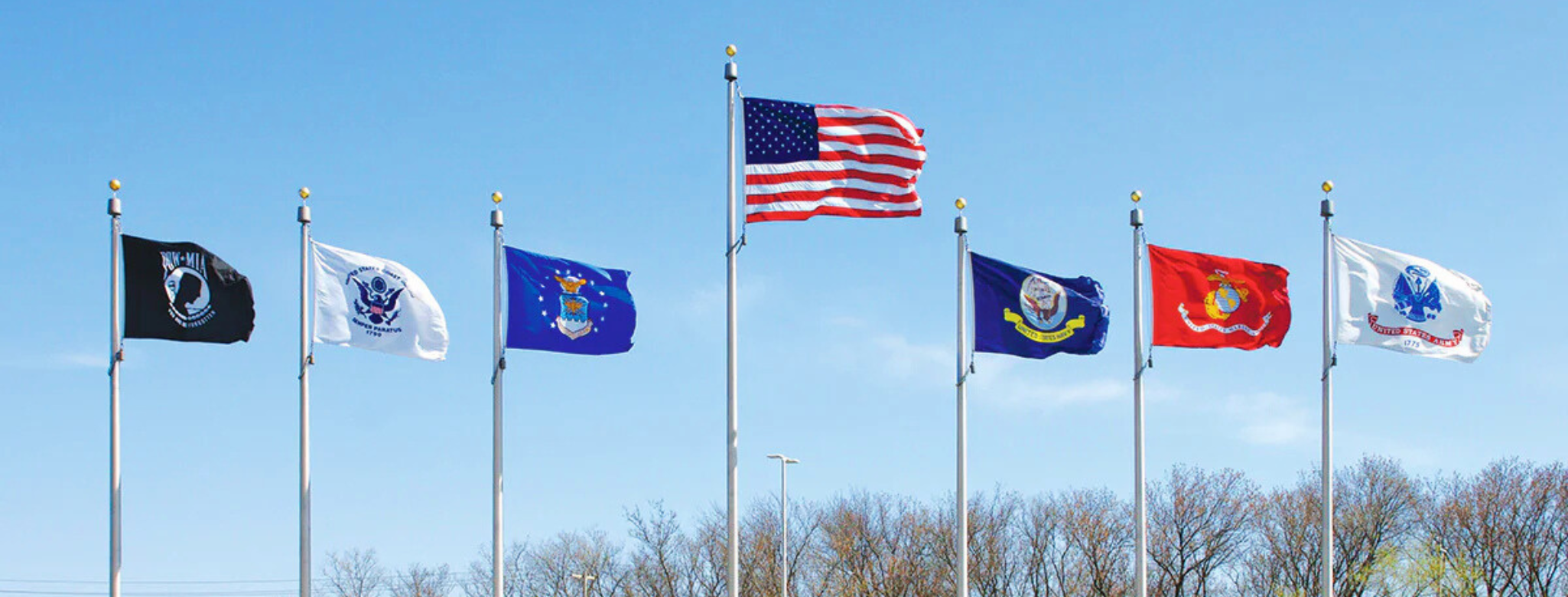Your Guide to Secondary Flags
Posted by Hayley Adams on Oct 9th 2025
Flying multiple flags is a great way to show support for your state, military branch, organization, or cause alongside the American flag. However, proper flag etiquette matters when displaying secondary flags. With Veterans Day coming up on November 11th, now is the perfect time to add a military service flag or POW/MIA flag to honor those who've served. Here's everything you need to know about doing it right.
Flying Two Flags on One Flagpole
When displaying two flags on a single flagpole, the American flag must always be positioned at the peak—the highest point of honor. Your secondary flag should be flown directly below it.
For proper visual balance, your secondary flag should be slightly smaller than the American flag. If you're flying a 3x5' American flag, consider a 2x3' or 3x5' secondary flag depending on the pole height. The key is ensuring the American flag remains the prominent display.
To hang both flags properly, you have two main options. The first is installing a secondary flag bracket—a specialized mounting arm that extends from your flagpole below the top position, creating a separate display point for your second flag. The second option is using a flagpole with two separate halyards (flag ropes), which allows you to independently raise and lower each flag on the same pole.
Whichever method you choose, maintaining proper separation is crucial. The flags should be spaced far enough apart that they won't touch or tangle, even in windy conditions. A good rule of thumb is to leave at least the height of one flag between them. This prevents wear and tear from the flags rubbing together and ensures each flag can fly freely and remain clearly visible.
Using Multiple Flagpoles
Multiple flagpoles offer more flexibility and visual impact. When you have two poles of equal height, the American flag should fly on the flag's own right (the viewer's left when facing the display). Your secondary flag goes on the second pole.
Both flags should be the same size when poles are equal height, and they should be flown at the same level. Never fly a secondary flag higher than the American flag.
For three or more flagpoles, the American flag takes the center position if there's an odd number of poles, or the leftmost position (from the flag's perspective) if there's an even number.
Choosing Your Secondary Flag
Secondary flags can include state flags, military service flags, POW/MIA flags, historic flags like the Gadsden or Betsy Ross, or organizational flags. The choice reflects your personal values, heritage, or affiliations.
Remember that all flags require proper care—raise them briskly and lower them ceremoniously, never let them touch the ground, and illuminate them at night or bring them in at sunset.
Ready to display your pride with proper flag etiquette? Eagle Mountain Flag and Flagpole has everything you need—from American flags and secondary flags to quality flagpoles and all hardware. Visit us today to find the perfect flags for your home or business and fly them with honor.

